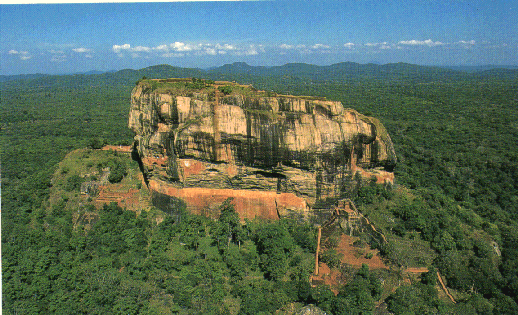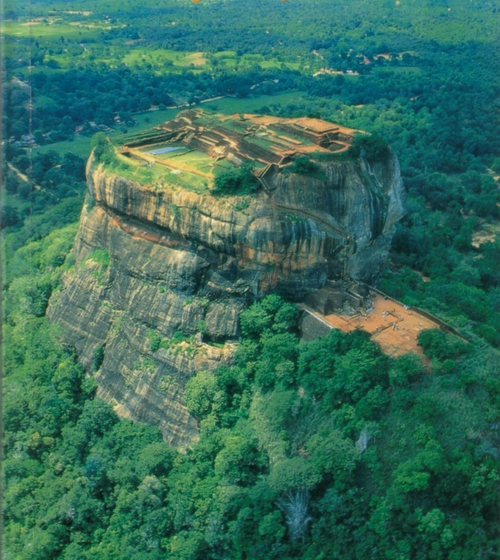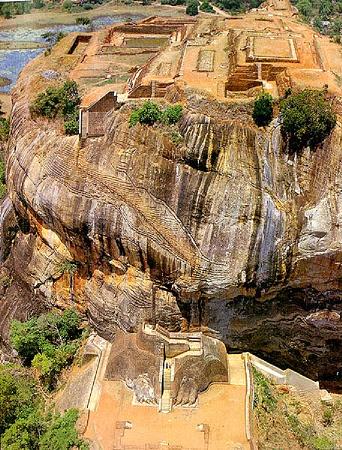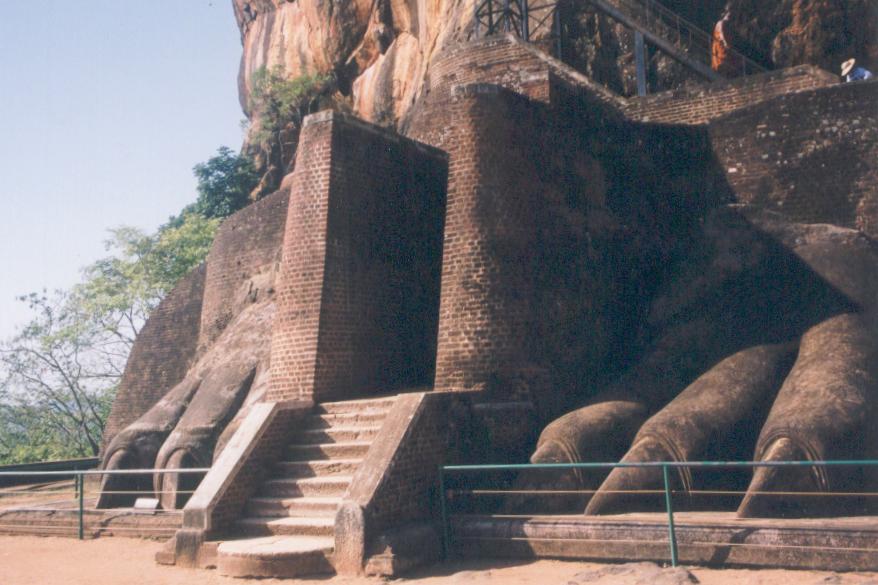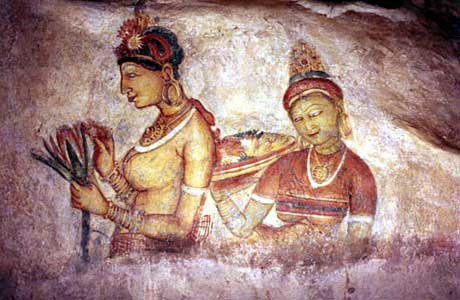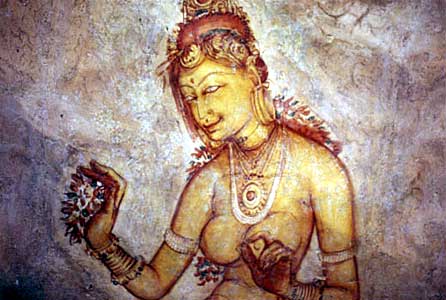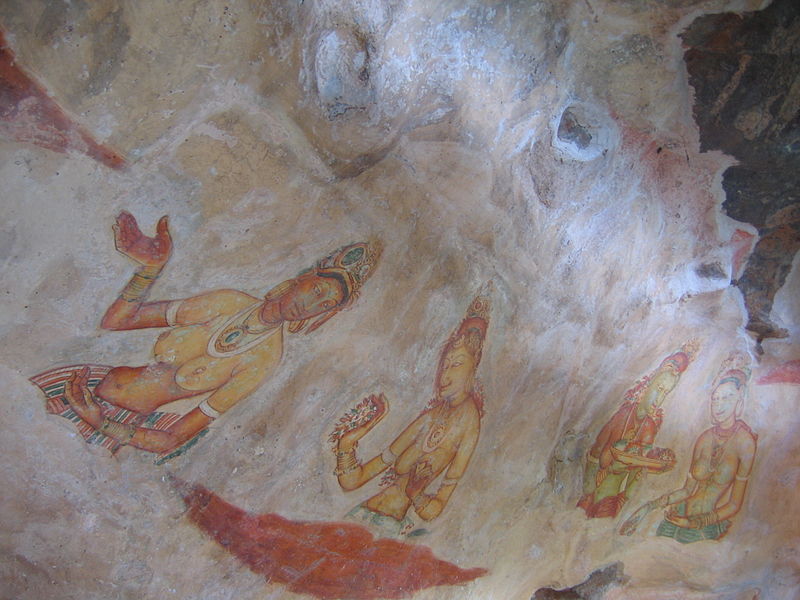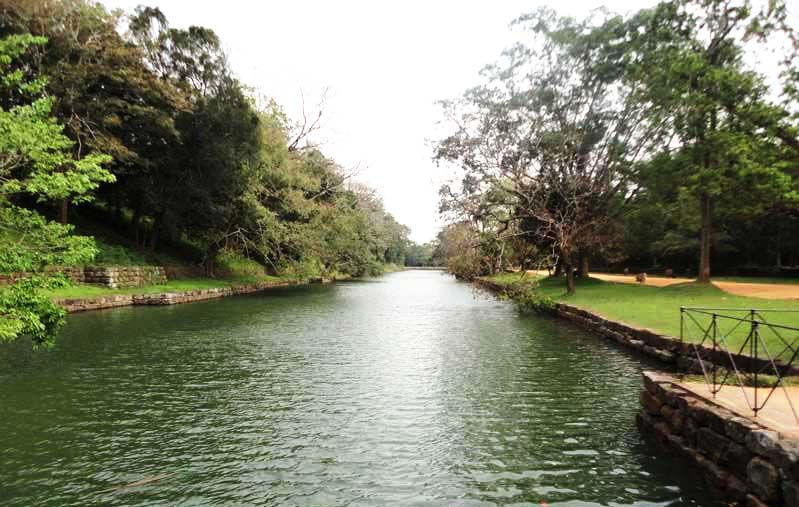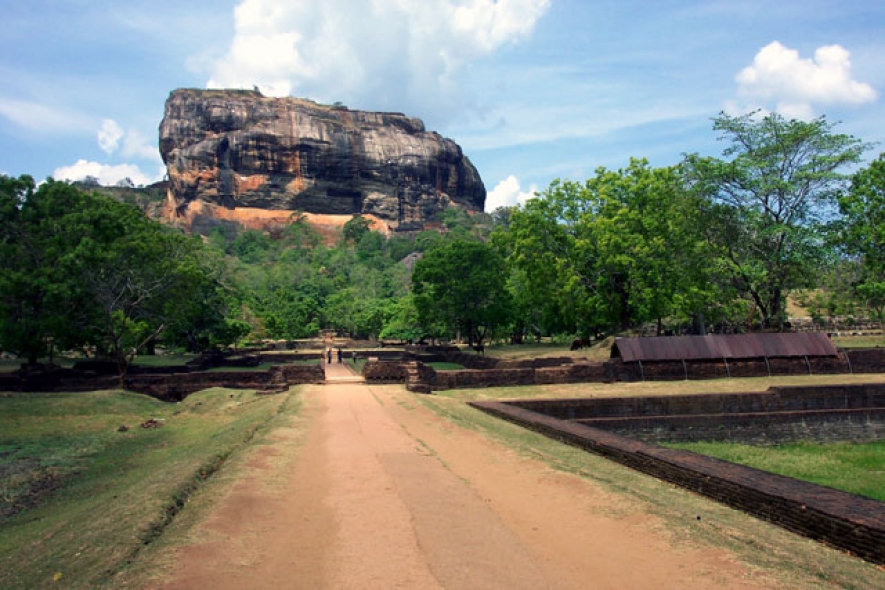Sigiriya consists of an ancient citadel built by King Kashyapa during the 5th century. The Sigiriya site contains the ruins of an upper palace located on the flat top of the rock, a mid-level terrace that includes the Lion Gate and the mirror wall with its frescoes, the lower palaces located behind the lavish lower gardens, and moats and ramparts which protected the citadel. The site was both a palace and a fortress. The upper palace on the top of the rock includes cisterns cut into the rock that still retain water. The moats and walls that surround the lower palace are still exquisitely beautiful.
King Kashyapa had reverted his fortress to an ecological wonder by having Royal Pleasure Gardens, Water Gardens , Fountain Gardens and Boulder Gardens made inside the inner city as well as at the palace premises on the Rock summit.
The most renowned is the Sigiriya Rock Paintings or Frescoes of Sigiri Damsels locally called as ' Sigiri Apsaras' painted on a Western Rock face cavity about 100 meters high from the rock base .There now remains around 21 paintings of Sigiriya Damsels but there had been around five hundred paintings during King Kassapa's time along several other places of the same Western Rock face.
Another interesting construction in Sigiriya is the Mirror Wall, which is covered with graffiti from the 7th to the 10th centuries AD. These were written by the people who came to see Sigiriya during those long years.
The New Government of Sri Lanka has taken steps to install an electrically powered elevator in Sigiriya without harming its attractiveness and cultural values. The Main purpose of this step is to facilitate disabled and old people to visit Sigiriya.
